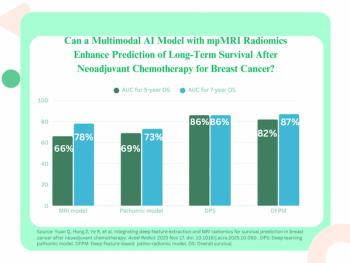
Radiologists add value to multidisciplinary cancer team
As cancer is discovered earlier and therapy administered sooner, patients are living longer. The role of imaging in cancer is increasing, bringing radiologists closer to the heart of the multidisciplinary care team. A categorical course at the ECR explored this topic.
As cancer is discovered earlier and therapy administered sooner, patients are living longer. The role of imaging in cancer is increasing, bringing radiologists closer to the heart of the multidisciplinary care team. A categorical course at the ECR explored this topic.
In the setting of cancer care, imaging has become crucial to patient management, said Prof. Janet E. Husband, president of the Royal College of Radiologists, in an interview with ECR radio. Imaging is being used to follow cancer during and after treatment. Many patients will have multiple imaging procedures repeated, and the workload for radiologists has exploded, she added.
CT established itself as the cornerstone for cancer imaging when it was introduced 30 years ago. The practice evolved with MRI and PET/CT and will eventually move to PET/MRI.
Today, imaging reveals highly detailed portraits of the tumor. These include anatomic location, morphology, and relationships to other structures, but also behavior and composition, Husband said. The goal of imaging now is to define that tumor so precisely that physicians can predict whether it will respond to therapy and to what type of therapy.
Imaging has assumed a pivotal role in multidisciplinary cancer therapy, Husband said. Images demonstrate to the surgeon, the clinical oncologist, and the medical oncologist how best that treatment should be given and in what order.
For example, imaging can reveal whether a tumor is small, contained, and removable by surgery or whether it is so large that radiotherapy should be tried first, Husband said. After a procedure, imaging becomes the key method for assessing tumor response.
One task faced by imagers is standardization of cancer imaging protocols, Husband said. Standardized protocols would promote best practices in patient care, and offer guidance to facilities where cancer imaging is just one component of a large imaging workload. Standardization will also promote consistent treatment among different hospitals and allow better comparisons of data between hospitals, she said.
Husband noted that radiologists from the U.K., Europe, and the U.S.have formed an organization, the
Newsletter
Stay at the forefront of radiology with the Diagnostic Imaging newsletter, delivering the latest news, clinical insights, and imaging advancements for today’s radiologists.
























